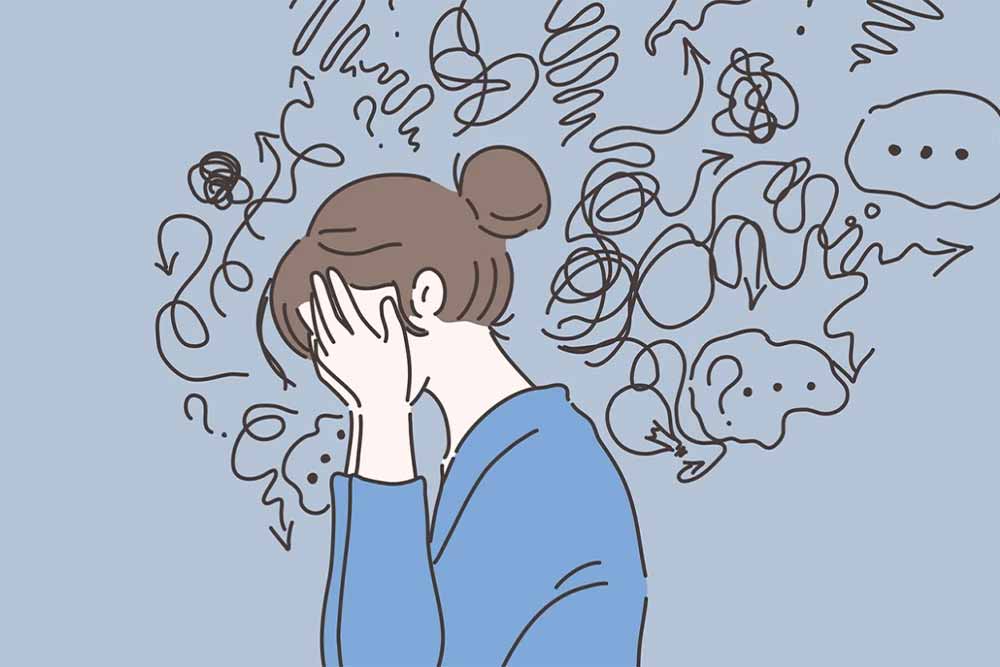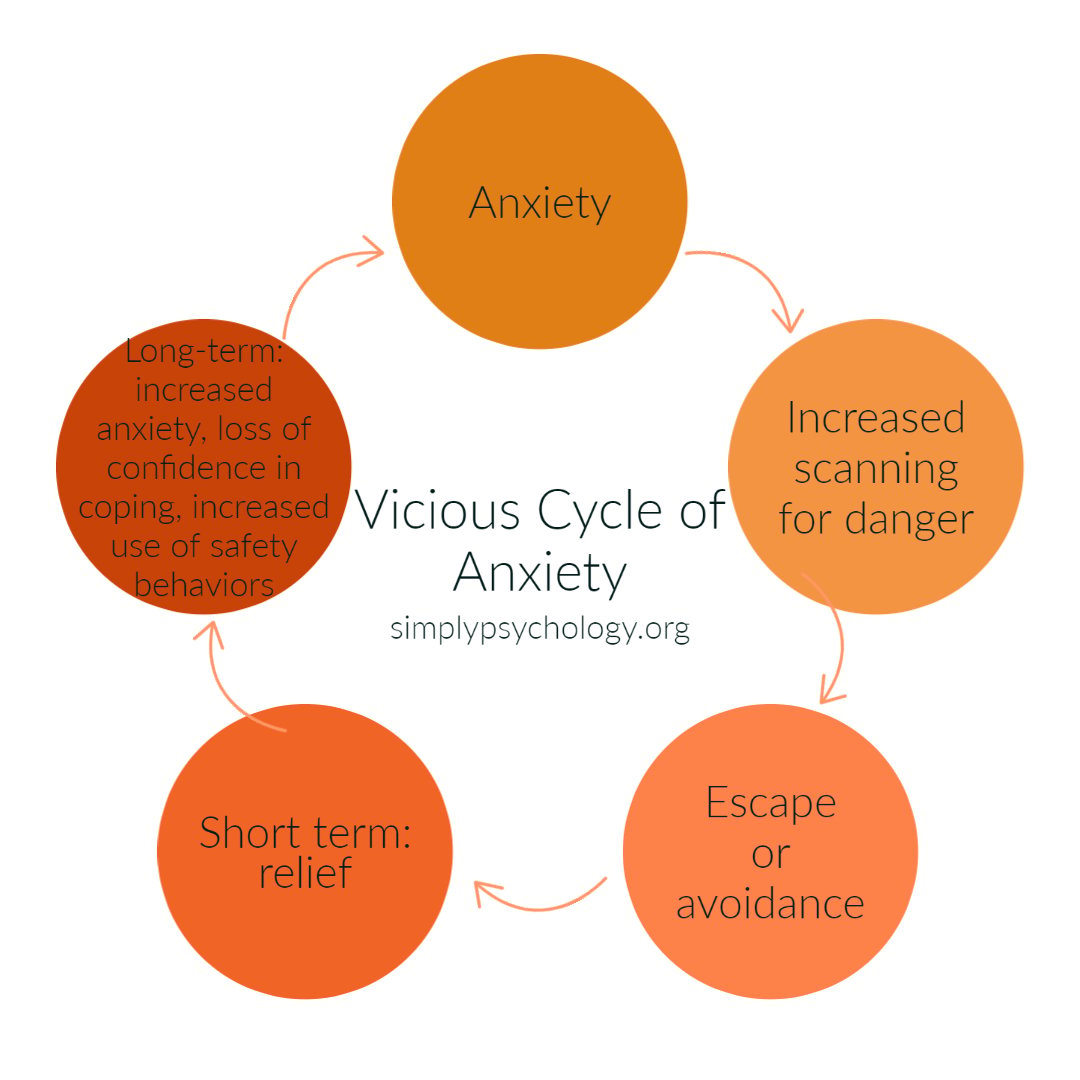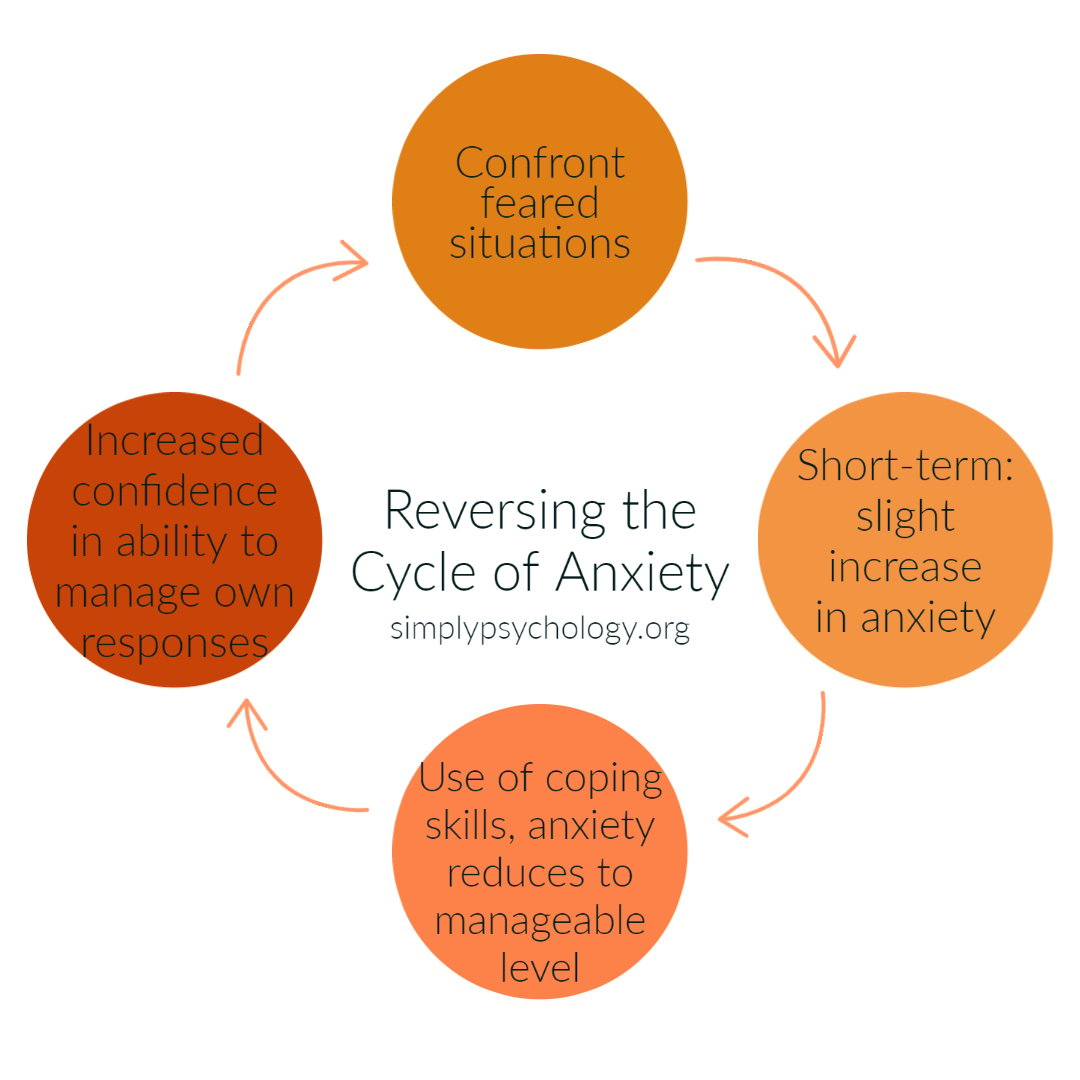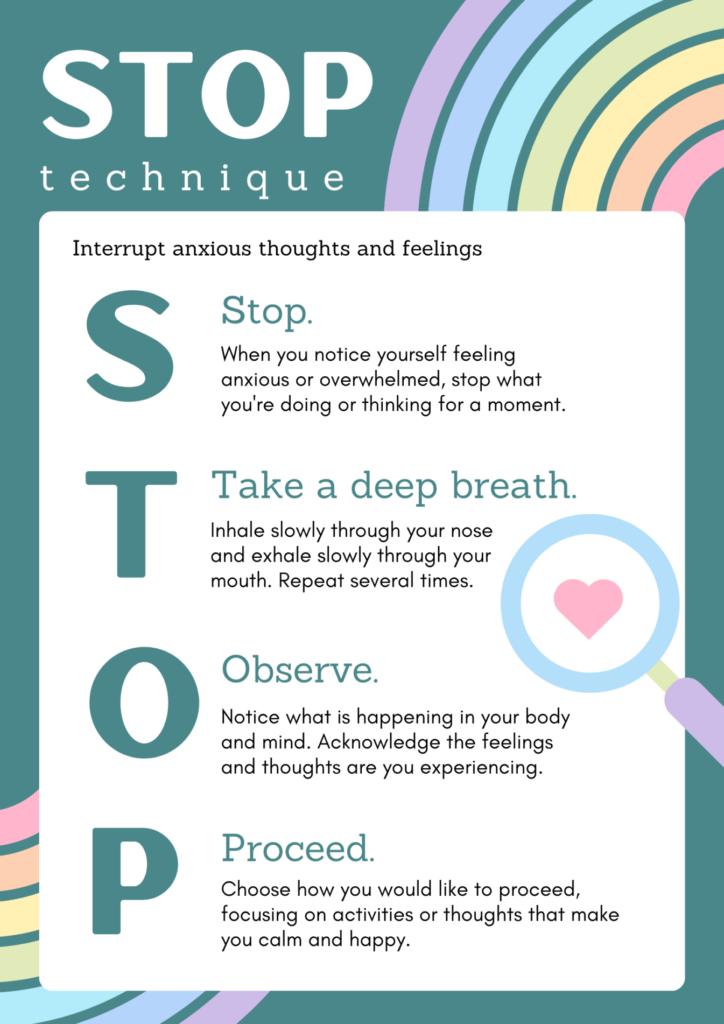On This Page:
Generalized anxiety disorder (GAD) is a mental health condition characterized by uncontrollable and excessive anxiety or worries about common occurrences and situations.

A person with GAD may have persistent and excessive worries about various things such as finances, health, and relationships, which could cause significant impairment to their daily life.
People with GAD may worry without an obvious reason to and can feel like these feelings are persistent for days, weeks, or months.
They may often report feelings that something bad will happen or that they cannot calm themselves down.
The anxiety experienced by those with GAD may occur for a specific reason, or there may be no known trigger. Still, it is disproportionately great or unrealistic to the situation.
The unexplained, trigger-less feelings of anxiety are described as ‘free-floating anxiety’ is common for people with GAD.
Free-floating anxiety is a general sense of uneasiness, discomfort, and nervousness that appears for seemingly no reason.
How Common Is GAD?
GAD is a relatively recent diagnosis. Before 1980, it was under the label of ‘anxiety neurosis,’ coined by Sigmund Freud in 1984.
The disorder described by Freud included panic symptoms, so when panic disorder was identified as a separate disorder, the part of anxiety neurosis that didn’t include panic became known as generalized anxiety disorder.
GAD is twice as common in women than it is in men. Studies in Europe suggest that GAD has a 12-month prevalence of around 2% and is one of the most frequently (up to 10%) diagnosed mental health disorders (Lieb, Becker, & Altamura, 2005).
People affected by GAD can still have functional lives with productive jobs and social lives but internally struggle with worry and distress. For people who are severely distressed by GAD, it might significantly impair their daily functioning that impacts on their job, finances and relationships etc.
What is it like to have GAD and worry?
People with generalized anxiety disorder (GAD) commonly report that their daily lives are affected by the condition, particularly in their work and relationships.
Many experience difficulties performing their job and need to take frequent sick leave. In some cases, the disorder can even lead to early retirement.
Below, we explore the real-life experiences of individuals with GAD and shed light on the impact it can have on daily activities.
When I go to sleep I panic, like as soon as my head hits the pillow if I don’t have internet and I can’t go on YouTube, my head, I start on like a mini panic attack cos you think about everything and it’s really annoying. You need to make your life perfect but it’s never going to be perfect, but you really start panicking and it’s not very nice.
Teenager
I want to be in my home. I am very happy at home. I do not answer the phone, I do not open the door, and, in this way, I feel well… but if someone rings the doorbell or the phone rings, my heart races… I have
(Woman, 51 years old)
achycardia. I have very high blood pressure … and the tears appear…
Anxiety Myths vs. Reality
| Myth | Reality |
|---|---|
| Snap a rubber band on your wrist every time you have a bad thought | Studies show that suppressing your thoughts makes them stronger and more frequent. Think of it this way: The thoughts you resist persist. |
| If a panic attack gets too bad, you can pass out or lose control. | It’s unlikely you will faint, which is caused by a sudden drop in blood pressure. During a panic attack your blood pressure does not fall; it actually rises slightly. |
| If you have an anxiety disorder, it is important to avoid stress and situations that make you feel “stressed.” | Treating yourself as if you are fragile and avoiding risk leads to feeling demoralized. Avoiding anxiety tends to reinforce it. You can be anxious and still do whatever you have to do. |
| Always carry a paper bag in case you hyperventilate. | Paper bags can serve as safety crutches that keep you anxious about being anxious. Hyperventilation, while uncomfortable, is not dangerous. |
| The causes of anxiety disorders are usually rooted in childhood, so effective therapy must focus on that time period. | There are different therapeutic approaches for managing anxiety. Research shows that treatment that focuses on the here and now, including new skills to manage thoughts, emotions, discomforts, and behavior are effective. |
| Medications for anxiety are addictive so they should be taken only if absolutely necessary. | SSRI and SNRI antidepressants are not addictive. Benzodiazepines might be helpful in the short term, but they can lead to increased tolerance and dependence after long-term use. |
| Medication is the only treatment for anxiety disorders. | Medication can be effective. But scientific research shows that cognitive-behavioral therapy (CBT) may be just as or more effective than medication (or a combination of CBT and medication) for most people, especially in the long run. |
| Some people are just worrywarts or neurotic, and there is nothing that can really make any difference. | Therapy can help you reduce worry and suffering and learn a different relationship to your own thoughts, for people with different temperaments and their extend of neurotic habits in their life. |
| If you eat right, exercise, avoid caffeine, and live a healthy lifestyle, your anxiety will go away. | While healthy habits are encouraged to help managing anxiety, they are not sufficient to help us confront the root cause that perpetuates our recurring anxiety. Apartment from strategies to reduce your stress, you may need to face your fears, learn new facts about your symptoms, stop avoiding, learn tolerance for some experiences, or change how you think, feel, and behave with respect to other people. |
| A never-ending supply of compassionate reassurance from family and friends and assistance in avoiding stress are good for someone with anxiety problems. | Well-meaning friends/family can inadvertently get caught up in reassurance compulsions and also maintain fears by keeping you from facing them. Compassionate and kindly encouragement to move through anxiety and doubts, instead of avoiding them, is more helpful. |
Do I have symptoms of generalized anxiety disorder?
It’s important to note that a diagnosis of generalized anxiety disorder (GAD) should be made by a qualified mental health professional using clinical interviews and other assessment tools.
Answering screening questions can be a useful tool for gathering information about a person’s symptoms and experiences, but they are not sufficient for diagnosing a mental health condition on their own.
| How often do you feel nervous, anxious or on edge? | |||
| Never | Occasionally | Sometimes | Often |
| How much do your worries interfere with your daily life? | |||
| Never | Occasionally | Sometimes | Often |
| How often do you become annoyed or irritable? | |||
| Never | Occasionally | Sometimes | Often |
| Do you find it hard to stop worrying once you have started? | |||
| Never | Occasionally | Sometimes | Often |
| To what extent do you avoid situations or activities due to worry or anxiety? | |||
| Never | Occasionally | Sometimes | Often |
| If you were not worrying about whatever you are concerned with today, would you be worrying about something else? | |||
| Never | Occasionally | Sometimes | Often |
If you answered ‘often’ to most of these questions then you could be experiencing excessive levels of worry about everyday situations.
Signs of GAD
Symptoms for GAD can vary in intensity, and the anxiety level changes depending on the situation.
Occasionally, people with GAD may find that their symptoms suddenly increase in severity, preventing normal functioning.
GAD differs from other conditions which have similar symptoms. Those who have social anxiety disorder, for instance, would only experience intense anxiety in social situations with fear of negative judgement from other people; people with depression may occasionally feel anxious but not as frequently as those with GAD.
Likewise, those with simple/ specific phobia also have intense worries but usually about one particular thing. In contrast, those with GAD worry about a number of different topics but are not usually as intense as a phobia.
Psychological
-
Persistent worrying or anxiety about a number of areas.
-
The persistent worries or anxieties are out of proportion to the impact of the events.
-
Overthinking plans and solutions to all possible worst-case outcomes.
-
The inability to control constant worries.
-
Perceiving a lot of situations or events as threatening.
-
Difficulty dealing with uncertainty.
-
Feeling unable to set aside or let go of worries.
-
Fear of making the wrong decision.
-
Feeling unable to relax – being irritable.
-
Feeling as if the mind goes blank.
-
General feeling of being on edge.
-
Having difficulties concentrating.
Physical
-
Sweating
-
Fatigue
-
Trouble sleeping
-
Nausea
-
Stomach aches
-
Headaches
-
Trembling or feeling twitchy
-
Muscle tension
-
Light-headedness
-
Frequent need to urinate
Cognitive Distortions
There are some key features to GAD that maintains and perpetuates their anxiety. These include three cognitive distortions.
For example, negative automatic thoughts, such as catastrophizing (e.g., believing that something terrible is going to happen) and labeling (e.g., labeling themselves as a bad person) are unhelpful thoughts that could keep our anxiety going.
Our maladaptive assumptions, which are unrealistic thoughts and attitudes (e.g., ‘all anxiety is bad,’ ‘I must get rid of all of my anxiety’) may also lead to excessive worries and anxiety due to difficulties in meeting the unrealistic rules/ assumptions.
What keeps GAD and worry going?
At the core of anxiety is worrying about potential threats. Anxiety is an attempt to cope with a future event that is believed to be negative and threatening.
However, anxiety can keep people stuck in an endless loop of more anxiety, and thus it becomes a vicious cycle.
Avoidance and safety behaviors
People with anxiety may often use avoidance as a coping mechanism. This is where they try to avoid feared situations as much as possible to reduce their anxiety. Avoidance can cause a quick decrease in anxiety, but it can worsen anxiety in the long run.
People with anxiety may also rely on safety behaviors as another way to cope. This can include relying on anxiety reducing medications, having an exit plan, or excessive use of a phone to distract themselves.
Although these safety behaviors can help reduce feelings of anxiety, people can become too dependent on them, and they are not challenging themselves to experience that the perceived threat is not that threatening.
Also, safety behaviors may not be available in every anxiety-provoking situation, so when not available, more feelings of anxiety may be produced.
The cycle of anxiety
If someone has anxiety, they are more likely to be scanning their environment for potential threats – more attention is being paid to them. This causes physical symptoms of anxiety to intensify.
To cope with the anxiety, individuals may choose to either avoid or escape the situation which brings them short-term and usually instant relief.
Although this relief can make someone with anxiety, feel better short term, in the long term this can be detrimental.
Long-term effects of avoidance and escape can result in an increase in physical symptoms, a loss of confidence about coping, and increased use of safety behaviors.
Because of this, this can keep the anxiety going and a repetition of the cycle described. The anxiety may even increase or be generalized to other situations.

Reversing the cycle
In order to break the vicious cycle of anxiety, it is important to gradually confront the feared situations whilst dropping safety behaviors.
In the short-term, this can result in increased feelings of anxiety, but after a while, the physical symptoms should decrease as well as the scanning for potential threats.
The use of healthy coping skills can help reduce anxiety to a manageable level. This can build confidence slowly in order to get used to these situations and control responses.
By challenging themselves in structured and repeated ways, there should be a better chance of reducing anxiety overall.

Causes and Risk Factors
As with most mental health conditions, there is not thought to be one direct cause of the development of GAD. GAD is likely to develop from a complex interaction between the biological, psychological and social factors of the individual, including:
-
Differences in brain structure, function, and chemistry
-
Genetics – individuals who have immediate family members with an anxiety disorder or other mental health condition may be more likely to develop GAD
-
Differences in the way that threats are perceived
-
Personality traits – an individual whose temperament is timid, has a pessimistic outlook, or who tends to avoid anything dangerous may be more prone to GAD
-
Experiences – people with GAD may have a history of significant life change, traumatic or negative experiences. They may have struggled during childhood or been exposed to a recent traumatic event.
-
Other conditions – people with a chronic medical illness or other mental health disorder may also be at an increased risk of developing GAD
A key brain area that is believed to be involved in GAD is the amygdala. The amygdala is part of the limbic system of the brain and is involved in the processing and regulation of emotions, including fear.
In a study investigating young people with GAD, it was found that they had hyperactive amygdalas when presented with masked threats, compared to those without GAD (Monk et al., 2008).
In the brain, there is known to be a presence of threat-related negative connectivity between the right ventrolateral prefrontal cortex and the amygdala, suggesting that the prefrontal cortex (an area involved in critical thinking and reasoning) modulates the amygdala response to threats.
The amygdala is believed to support vigilance to threats through immediate threat processing, whereas the ventrolateral prefrontal cortex facilitates later processes related to emotion regulation.
Thus, if there are disturbed amygdala to ventrolateral prefrontal cortex interactions, these are thought to influence anxiety as the amygdala may be overriding the part of the brain that is providing logical reasoning to perceived threats.
The presence of other mental health disorders could also contribute as a risk factor for developing GAD.
As previously mentioned, sometimes GAD can develop from environmental experiences that are either stressful or traumatic.
The outbreak of COVID-19, which many consider a stressful or traumatic event, has been investigated for its impact on mental health. It was found in a 2021 study that reported psychological distress regarding COVID-19 was positively correlated to depressive symptoms as well as to GAD (Nikčević et al., 2021).
This makes sense considering many people during the pandemic may have developed more extreme worries over their health, others’ health, work, and financial matters – the major worries that people with GAD tend to have.
GAD in Children and Adolescents
GAD is also common in children and adolescents, who may experience some of the same symptoms but may have different worries.
They may worry about their performance at school or family members’ (e.g., parents’) safety. Children and adolescents with GAD may:
-
Feel overly anxious to fit in with their peers
-
Lack confidence
-
Strive for approval
-
Redo tasks until they are perfected
-
Spent an excessive amount of time on their homework
-
Need lots of reassurance about their performance
-
Experience stomach aches or other physical complaints
-
Avoid school or social situations
When to Seek Help
It is usually recommended to see a doctor when the individual:
-
Feels as if the worry is excessive and interfering with work, relationships, and other aspects of functioning.
-
Feels depressed or irritable due to anxiety or may have issues with substance abuse or have another mental health condition.
-
Is experiencing suicidal thoughts or behaviors.
-
Feel as if the anxiety is getting worse and is persistent – it’s important to seek help before the anxiety becomes extreme.
-
Find themselves constantly seeking help and reassurance from others.
-
Repeatedly tries different methods of anxiety management to no avail.
As the lifetime prevalence of GAD is twice as likely in women than in men, some women’s health professionals have recommended that it might be helpful for girls and women over the age of 13 years old to be screened for anxiety (Gregory et al., 2020).
Many people may not seek help for GAD since they do not experience the extreme physical symptoms of panic attacks. However, panic is not always typically present in people with GAD, so it is still useful to seek help if experiencing physical symptoms of anxiety.
It may also be helpful to note the physical symptoms that are being experienced before attending an appointment with a professional.
Since anxiety is present in a lot of mental health conditions such as obsessive-compulsive disorder ( OCD ), social anxiety disorder, and post traumatic stress disorder (PTSD) etc., it will be beneficial to find someone who understands the specific criteria that an individual may meet so that they can be diagnosed and treated accordingly.
Treatment
Medication
For treating GAD, some short-term medications can be taken to relax some of the physical symptoms of anxiety, such as muscle tension and stomach cramping.
Benzodiazepines are the main class of medications giving short term relief for anxiety. Some examples of benzodiazepines are:
-
Alprazolam (Xanax)
-
Clonazepam (Klonopin)
-
Lorazepam (Ativan)
These medications are not recommended to take long-term, and they have side effects that can cause high dependence and can be abused.
Other medications, such as antidepressants, are medications that reduce psychological symptoms such as depression and anxiety, and are safe to be taken long-term.
Selective serotonin reuptake inhibitors (SSRIs), which affect serotonin levels in the brain, are a frequent choice for many. Some SSRIs that can be prescribed include:
-
Citalopram (Celexa)
-
Fluoxetine (Prozac)
-
Sertraline (Zoloft)
SSRIs can take at least a few weeks to begin working, and they can also have some side effects, such as nausea, dry mouth, and weight gain, specifically when beginning to take the medication. Some medications may also increase suicidal thoughts so it’s important to ensure regular monitor of your conditions with a professional.
Cognitive behavioral therapy
Cognitive behavioral therapy ( CBT ) is a common form of therapy for many people with anxiety. There has been evidence supporting its effectiveness in treating anxiety when comparing to medications in the long term.
CBT involves regular sessions with a therapist with the goal of working together to manage negative or maladaptive thinking patterns and behaviors, to more balanced, realistic and helpful ones.
In CBT sessions, people learn how to recognize and control their anxious thoughts through learning specific skills to manage worries associated with GAD directly.
The cognitive distortions associated with GAD are features that can be targeted in CBT sessions.
With the therapist, individuals with GAD can also learn to challenge themselves and break the vicious cycle of anxiety by identifying and gradually dropping safety behaviors and challenging negative thoughts.
Through this process, symptoms improve as one builds on their success. CBT can usually be delivered effectively in around 8-12 sessions minimum, depending on the presentation of the individuals. CBT is often prescribed alongside medication for effective treatment.
Lifestyle
Aside from prescribed medications and therapy, some lifestyle changes could help someone who is struggling with GAD:
-
Maintaining a healthy diet and taking up regular exercise
-
Having enough sleep
-
Taking up yoga, meditation, or other relaxing activities
-
Avoiding stimulants such as coffee
-
Avoiding alcohol – alcohol can make people feel less anxious almost immediately, which is why many people with anxiety may turn to alcohol. However, they may feel more irritable or depressed after consumption; this can also interfere with some medications.
Do you need mental health support?
USA
Contact the National Suicide Prevention Lifeline for support and assistance from a trained counselor. If you or a loved one are in immediate danger: https://suicidepreventionlifeline.org/
1-800-273-8255
UK
Contact the Samaritans for support and assistance from a trained counselor: https://www.samaritans.org/; email jo@samaritans.org .
Available 24 hours a day, 365 days a year (this number is FREE to call):
116-123
Rethink Mental Illness: rethink.org
0300 5000 927
References
Cheetham‐Blake, T. J., Family, H. E., & Turner‐Cobb, J. M. (2019). ‘Every day I worry about something’: A qualitative exploration of children’s experiences of stress and coping. British journal of health psychology, 24(4), 931-952.
Dugas, M. J., Sexton, K. A., Hebert, E. A., Bouchard, S., Gouin, J. P., & Shafran, R. (2022). Behavioral Experiments for Intolerance of Uncertainty: A Randomized Clinical Trial for Adults with Generalized Anxiety Disorder. Behavior Therapy.
Government of Western Australia. (n.d.). The Vicious Cycle of Anxiety. Centre for Clinical Interventions. Retrieved 2021, October 12, from: https://www.cci.health.wa.gov.au/~/media/CCI/Mental-Health-Professionals/Panic/Panic—Information-Sheets/Panic-Information-Sheet—03—The-Vicious-Cycle-of-Anxiety.pdf
Gregory, K. D., Chelmow, D., Nelson, H. D., Van Niel, M. S., Conry, J. A., Garcia, F., Kendig, S. M., O’Reilly, N. Qaseem, A., Ramos, D., Salganicoff, A., Son, S., Wood, J. K. & Zahn, C. (2020). Screening for anxiety in adolescent and adult women: a recommendation from the Women’s Preventive Services Initiative. Annals of Internal Medicine, 173(1), 48-56.
Hurtado, M. M., Villena, A., Vega, A., Amor, G., Gómez, C., & Morales‐Asencio, J. M. (2020). ‘I have anxiety, but I have values and preferences’ experiences of users with generalized anxiety disorder: a qualitative study. International Journal of Mental Health Nursing, 29(3), 521-530.
Lieb, R., Becker, E., & Altamura, C. (2005). The epidemiology of generalized anxiety disorder in Europe. European Neuropsychopharmacology, 15(4), 445-452.
Tyrer, P., & Baldwin, D. (2006). Generalised anxiety disorder. The Lancet, 368(9553), 2156-2166.
Monk, C. S., Telzer, E. H., Mogg, K., Bradley, B. P., Mai, X., Louro, H. M., Chen, G., McClure-Tone, E. B., Ernst, M. & Pine, D. S. (2008). Amygdala and ventrolateral prefrontal cortex activation to masked angry faces in children and adolescents with generalized anxiety disorder. Archives of general psychiatry, 65(5), 568-576.
Nikčević, A. V., Marino, C., Kolubinski, D. C., Leach, D., & Spada, M. M. (2021). Modelling the contribution of the Big Five personality traits, health anxiety, and COVID-19 psychological distress to generalised anxiety and depressive symptoms during the COVID-19 pandemic. Journal of Affective Disorders, 279, 578-584.
Sanderson, W. C., Wetzler, S., Beck, A. T., & Betz, F. (1994). Prevalence of personality disorders among patients with anxiety disorders. Psychiatry Research, 51(2), 167-174.



